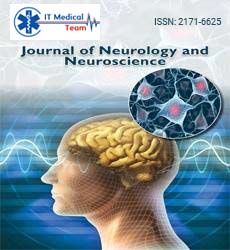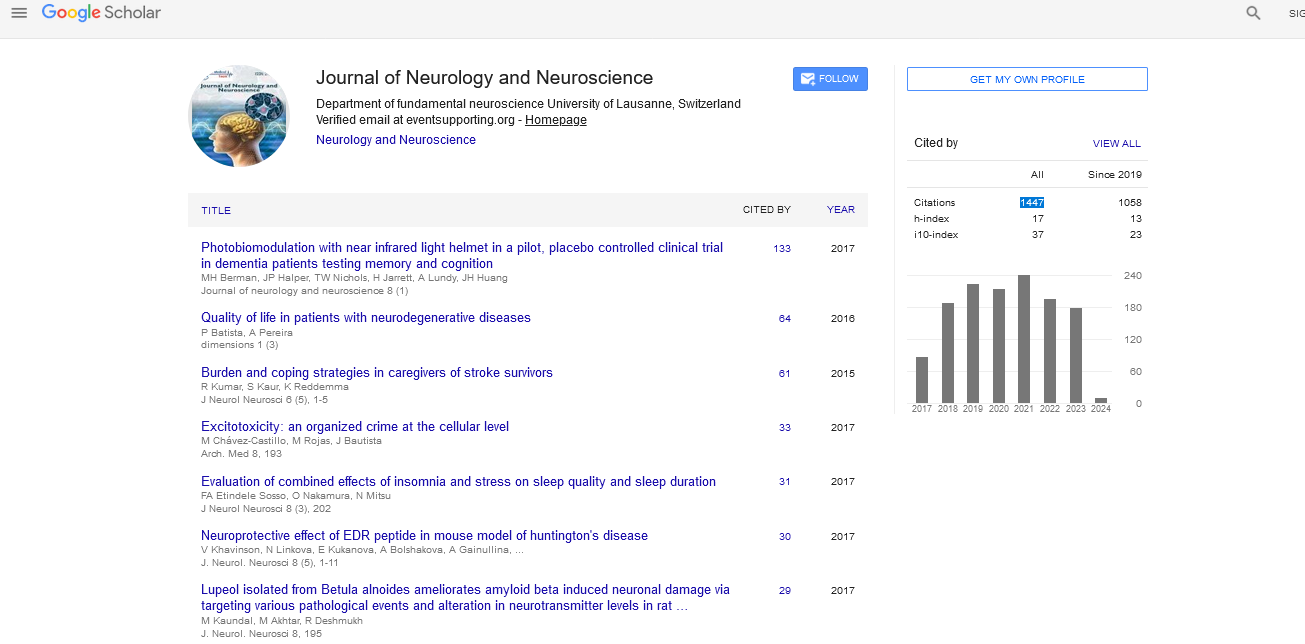Perspective - (2025) Volume 16, Issue 3
Evaluating the Durability of Endovascular Coiling in Posterior Circulation Aneurysms
Zakino Neonn*
Department of Neurosciences & Psychiatry, University of Toledo College of Medicine and Life Sciences, Toledo, USA
*Correspondence:
Zakino Neonn, Department of Neurosciences & Psychiatry, University of Toledo College of Medicine and Life Sciences,
USA,
Email:
Received: 27-May-2025, Manuscript No. ipjnn-25-15718;
Editor assigned: 29-May-2025, Pre QC No. P-15718;
Reviewed: 12-Jun-2025, QC No. Q-15718;
Revised: 17-Jun-2025, Manuscript No. R-15718;
Published:
24-Jun-2025
Introduction
The treatment of intracranial aneurysms has evolved significantly over the past three decades, especially with the advent and refinement of endovascular techniques. Among these, endovascular coiling has become a primary method for managing both ruptured and unruptured aneurysms. However, the anatomical complexity and clinical risks associated with posterior circulation aneurysms make their management particularly challenging. The posterior circulation, which supplies the brainstem, cerebellum, and occipital lobes, comprises the vertebral arteries, basilar artery, and their branches. Aneurysms in this territory are less common than those in the anterior circulation but are associated with higher rates of rupture and morbidity. As such, evaluating the durability of endovascular coiling in this subgroup is critical to understanding its long-term effectiveness, safety, and place in contemporary neurovascular care [1].
Description
Endovascular coiling involves the insertion of detachable coils into the aneurysm sac via a microcatheter, promoting thrombus formation and preventing blood flow into the aneurysm, which theoretically reduces the risk of rupture or rebleeding. While the procedure is less invasive compared to microsurgical clipping, concerns persist regarding the long-term stability of the treatment. Durability in this context refers to the sustained occlusion of the aneurysm over time, absence of recanalization or regrowth, and a low retreatment rate. Posterior circulation aneurysms present a distinct subset due to their deep-seated location, frequent wide-necked morphology, and often fusiform or dissecting nature, which complicates the achievement of durable aneurysm occlusion through coiling alone. Consequently, these anatomical and morphological factors directly influence the long-term success of endovascular approaches in the posterior circulation [2].
Initial procedural success rates for endovascular coiling of posterior circulation aneurysms are generally favorable. Many large-scale studies and registries, including the International Subarachnoid Aneurysm Trial (ISAT), have demonstrated comparable or superior outcomes in terms of immediate procedural safety and neurological recovery when coiling is used in appropriately selected patients. However, when long-term follow-up is considered, durability becomes a central concern. Recanalization, or reopening of the aneurysm sac, is reported in 15–30% of coiled aneurysms in the posterior circulation, a significantly higher rate than in the anterior circulation. This occurs primarily due to coil compaction, incomplete initial occlusion, or aneurysm regrowth, particularly in cases of ruptured aneurysms where fragile vessel walls complicate coil stability. Recanalization is especially prevalent in wide-necked aneurysms, where achieving a dense coil packing is more difficult, and the risk of coils migrating into the parent artery is greater [3].
One of the key technological responses to this challenge has been the development and widespread adoption of adjunctive devices such as balloon-assisted coiling, stent-assisted coiling, and more recently, flow diverters. Stent-assisted coiling has improved the ability to treat wide-necked posterior circulation aneurysms by providing a scaffold that prevents coil herniation into the parent vessel and facilitates better packing of the aneurysm sac. Flow diverters, such as the Pipeline Embolization Device, have further expanded the treatment arsenal, particularly for fusiform and large or giant aneurysms that are not amenable to coiling alone. However, the use of these devices in the posterior circulation, especially in the basilar artery, is associated with unique risks, including perforator infarctions due to the occlusion of small, vital arteries that supply the brainstem. Therefore, while adjunctive devices may enhance durability, their use must be weighed against the increased procedural risk, particularly in this vascular territory [4].
The biological healing process following coiling also plays a vital role in determining the durability of treatment. After coil placement, thrombus formation is followed by progressive fibrosis and neointima development over the aneurysm neck. In some patients, this healing process may be incomplete or delayed, particularly in those with ruptured aneurysms or those with altered coagulation or inflammatory profiles. Moreover, in cases where bioactive coils or hydrogel-coated coils are used, studies have shown slightly improved occlusion rates and reduced recanalization, although these results are not universally consistent across all aneurysm types. The durability of coiling is not solely dependent on device technology but also on patient-specific factors including age, smoking status, hypertension, aneurysm rupture status, and even genetic predispositions that influence vascular wall integrity. Long-term follow-up imaging is essential for evaluating durability and guiding further treatment decisions. Most guidelines recommend digital subtraction angiography (DSA) or magnetic resonance angiography (MRA) at 6 months, 1 year, and then annually or biennially for at least 5 years after coiling. In posterior circulation aneurysms, the rate of recurrence justifies a more aggressive follow-up regimen. Importantly, not all recanalizations necessitate retreatment. The clinical decision depends on the extent of reopening, aneurysm morphology, and the patient’s clinical status. That said, a significant percentage of patients do undergo retreatment after initial coiling, and repeat coiling is often technically feasible. However, each successive intervention may carry diminishing returns in terms of aneurysm stability and increased procedural risk [5].
Conclusion
In conclusion, while endovascular coiling has dramatically improved the safety and feasibility of treating posterior circulation aneurysms, concerns about long-term durability persist. The recurrence rate in this vascular territory remains higher than in anterior circulation aneurysms, necessitating ongoing surveillance and, in many cases, retreatment. Advances in adjunctive devices and coil technologies have improved outcomes but have not completely eliminated the problem of recanalization. Factors influencing durability include aneurysm morphology, location, rupture status, coil packing density, adjunctive techniques, and individual patient healing responses. The future of durable aneurysm treatment likely lies in a personalized approach that combines advanced imaging, patient-specific risk profiling, and the judicious use of evolving endovascular technologies. Until then, the key to managing posterior circulation aneurysms effectively lies in careful patient selection, precise procedural technique, and diligent long-term follow-up.
Acknowledgment
None.
Conflict of Interest
None.
References
- Ries T, Siemonsen S, Thomalla G, et al. Long-term follow-up of cerebral aneurysms after endovascular therapy–prediction and outcome of retreatment. Am J Neuroradiol. 2007;28(9):1755-1761.
Google Scholar, Cross Ref, Indexed at
- Molyneux A. International Subarachnoid Aneurysm Trial (ISAT) of neurosurgical clipping versus endovascular coiling in 2143 patients with ruptured intracranial aneurysms: a randomised trial. The Lancet. 2002;360(9342):1267-1274.
Google Scholar, Cross Ref, Indexed at
- Sokolowski JD, Chen CJ, Ding D, et al. Endovascular treatment for cerebral vasospasm following aneurysmal subarachnoid hemorrhage: predictors of outcome and retreatment. J Neurointerventional Surg 2018;10(4):367-374.
Google Scholar, Cross Ref, Indexed at
- Baranoski JF, Kalani MY, Przybylowski CJ, et al. Cerebral cavernous malformations: review of the genetic and protein–protein interactions resulting in disease pathogenesis. Front Surg. 2016;3:60.
Google Scholar, Cross Ref, Indexed at
- Piotin M, Spelle L, Mounayer C, et al. Intracranial aneurysms: treatment with bare platinum coils—aneurysm packing, complex coils, and angiographic recurrence. Radiol. 2007; 243(2):500-508.
Google Scholar, Cross Ref, Indexed at





